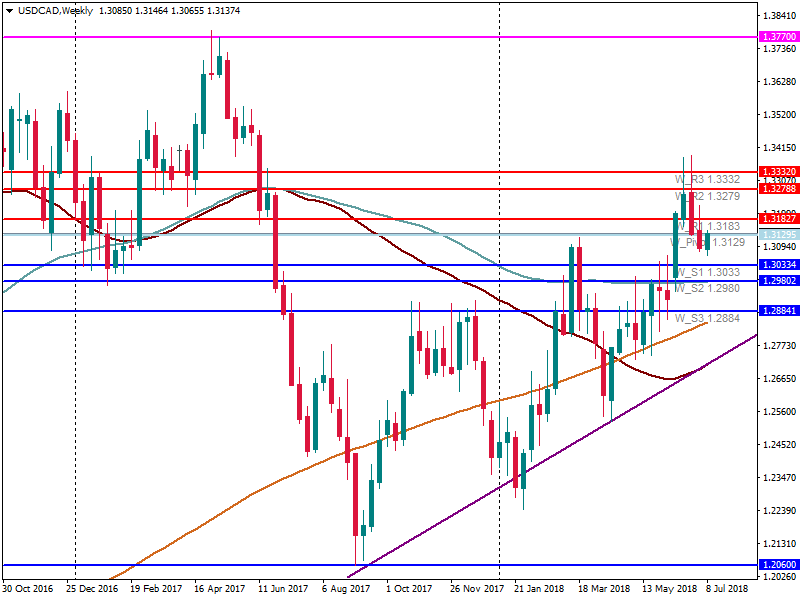Dovish rate hike: consequences for the CAD
The weakness of the USD supported the Canadian dollar. On July 9 it reached the highest level since the middle of June. Moreover, the market was anticipating the rate hike (July 11), so it gave additional support to the CAD. However, it’s early to say that the Canadian dollar finally has caught momentum and traders should bet on the long CAD. Trade wars, the highly-volatile oil market, the strong USD are big stones on the road of the CAD’s rise.
As we mentioned above, the Bank of Canada is anticipated to raise the interest rate on the meeting on July 11. It will be the first rate hike since January. Mostly, rate hikes support a rise of currencies. However, there are situations when the effect is opposite. It happens when the market has already priced in the rate hike (remember it happened with the USD in March), or when the market anticipates the rate hike along with more dovish comments on the future monetary policy.
The situation of the CAD corresponds to the second scenario. Despite the fact, that the Bank of Canada is expected to increase the interest rate on July 11, the market anticipates dovish sounding speech of the BOC governor Mr. Carney. As a result, the Canadian dollar has been depreciating ahead of the BOC meeting.
Firstly, let’s have a look at reasons that may encourage a rate hike.
The Canadian economic data are the main driver of the rate hike. Inflation has already crossed above the central bank’s 2% rate and is moving up further. The unemployment rate is near the lowest in 40 years. Wages have been increasing. Exports and investment finally look healthy. As a result, the economy’s reliance on consumers declines and the expansion becomes more resilient.
So, why Mr. Carney may be dovish?
- The first reason is clear. Trade wars. Trade war tensions have been putting pressure on markets for a long time. And looking at the current situation of new tariffs from the US, retaliation from other countries, there are no doubts that this issue will affect markets for longer.
Canada is under risk too as its biggest trading partner, the US, is anticipated to impose tariffs on imports from Canada as well.
- Another reason is the NAFTA deal. Talks with the United States and Mexico to realign the North American Free Trade Agreement are slow-moving.
As we can see, the central bank tries to balance economic data that requires rate hikes and trade tensions that create concerns about the future of the Canadian economy. Improving economic data create risks for the Central Bank. Wage pressures are exceeding inflation. If the Central Bank doesn’t raise the interest rate in the future to slow down the inflation rate, inflation will surpass the upper boundary of the bank’s 3% target. At the same time, trade uncertainties don’t let the Bank act with confidence.
Such unstable situation makes the market doubt on the future of the Canadian currency. As a result, the CAD is volatile.
Let’s take a look at the technical side.
After the USD/CAD pair reached the lows of the middle of June, it managed to rebound. The US dollar index recovered when the Canadian dollar index depreciated because of the negative expectations on the BOC meeting. Key weekly levels for the pair are the resistance at 1.3280 and the support at 1.2980 (100-week MA).
What about longer perspectives.
As we could see from the analysis of the current situation, the CAD is anticipated to weaken further. At the same time, perspectives for the USD are more optimistic. We can see on the chart that the uptrend is anticipated to continue for a while. MAs are moving up, that is a positive signal for the USD/CAD pair, but negative for the Canadian dollar. The key level in the middle-term is the resistance at 1.3770.

Making a conclusion, we can say that positive economic data are not always the main driver for the currency. Trade and geopolitical tensions may have a greater impact as it’s happening with the Canadian dollar. To encourage the Central Bank to increase the interest rates in the future, trade wars should ease. Otherwise, the Canadian dollar will stay under great pressure.